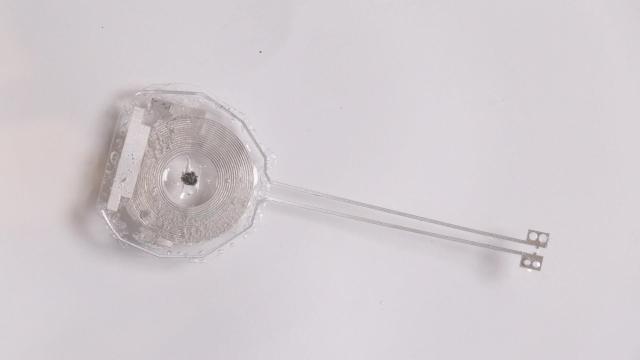While you might be more familiar with permanent pacemakers, temporary versions of the device are sometimes needed after open-heart surgery, heart attacks, or overdoses. The problem is these devices can cause infections, become dislodged, or introduce other complications like scarring during removal. But now, researchers from Northwestern and George Washington universities say they’ve created a temporary, wireless pacemaker that dissolves in the body after use.
In a study published in Nature Biotechnology (via Wired), the researchers describe a teeny device made of thin, flexible, and lightweight biocompatible materials that can be reabsorbed by the body in five to seven weeks. It also doesn’t require a battery for power or rigid wires and leads, as it harvests energy using NFC — the same tech used in smartphones for contactless payments. The device is only 250 microns thick and weighs less than half a gram. According to Wired, the big thing here is that silicon can be reabsorbed by the body. That means super-thin silicon can be used to create electronic components that are much thinner than the silicon that powers consumer electronics.
“Instead of using wires that can get infected and dislodged, we can implant this leadless biocompatible pacemaker,” Dr. Rishi Arora, the study’s co-lead and a cardiologist at Northwestern Medicine, said in a press statement. “The circuitry is implanted directly on the surface of the heart, and we can activate it remotely.” Arora went on to say that the device could also potentially be modified so that doctors may someday implant bioresorbable pacemakers in the leg or arm veins.
The current process for temporary pacemakers involves sewing electrodes onto the heart, with leads that exit the chest and connect to an external box. It’s not the most comfortable scenario for patients, as it limits their movements and activities to prevent dislodging. A flexible pacemaker that you can stick onto the heart that then later dissolves would eliminate that problem. The researchers also claim it’s possible to tailor the device’s thickness and composition to more precisely control how long the device functions before dissolving.
That said, it’ll be a while before this sort of technology can be used on humans. The researchers were successful when testing on mice and rabbits, but scaling this sort of treatment to humans requires more clinical testing and trials for both safety and efficacy. According to Wired, clinical trials based on this design might begin in roughly three years. While that seems like a long time, this type of medical technology often has a long lead time due to rigorous testing standards. However, if successful, that could open the door to other types of dissolvable implants for other hard-to-operate on organs.
